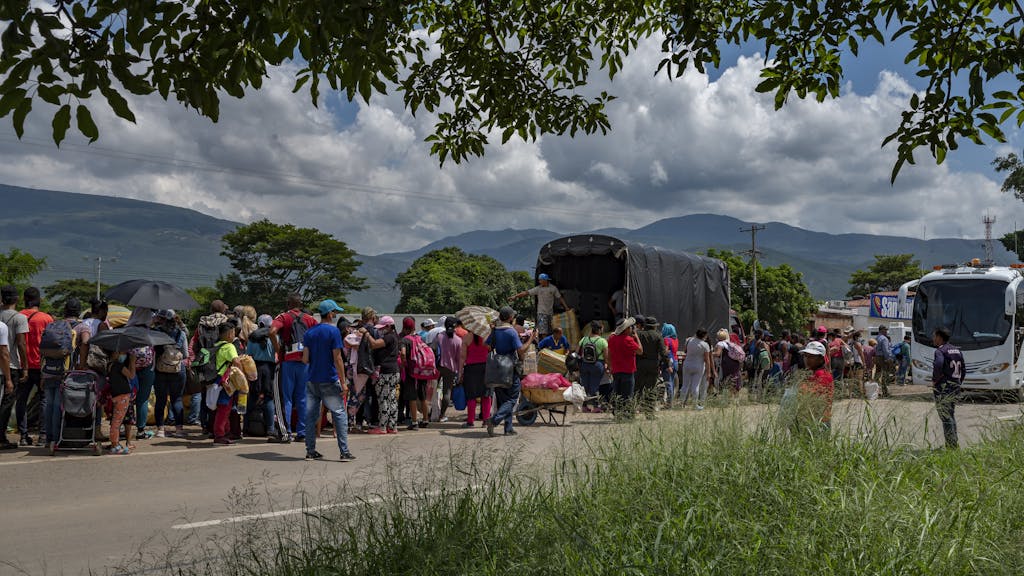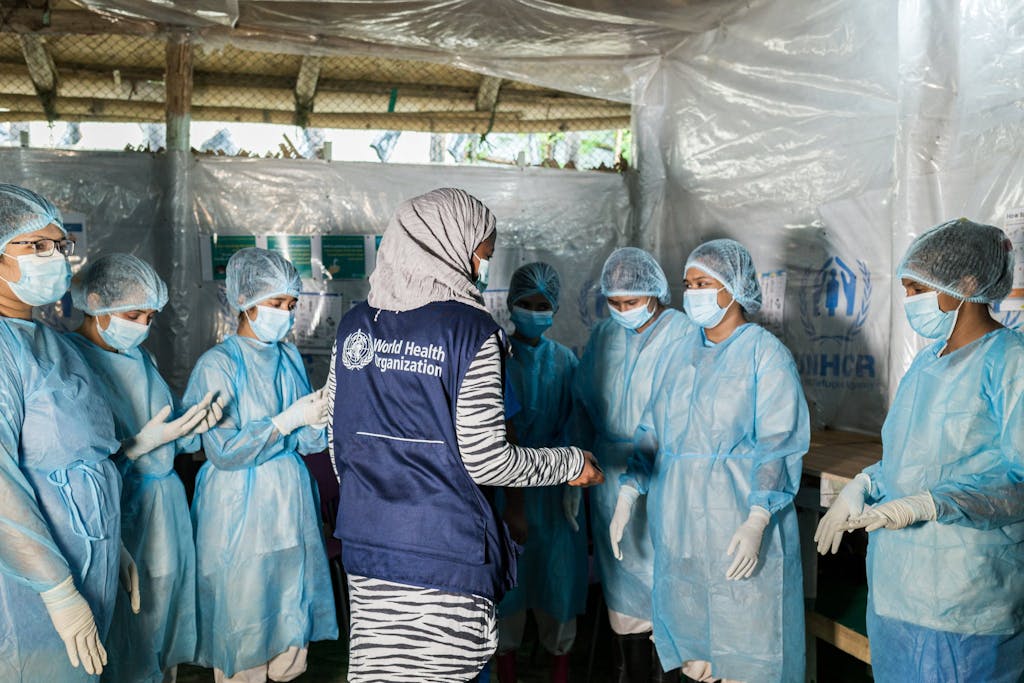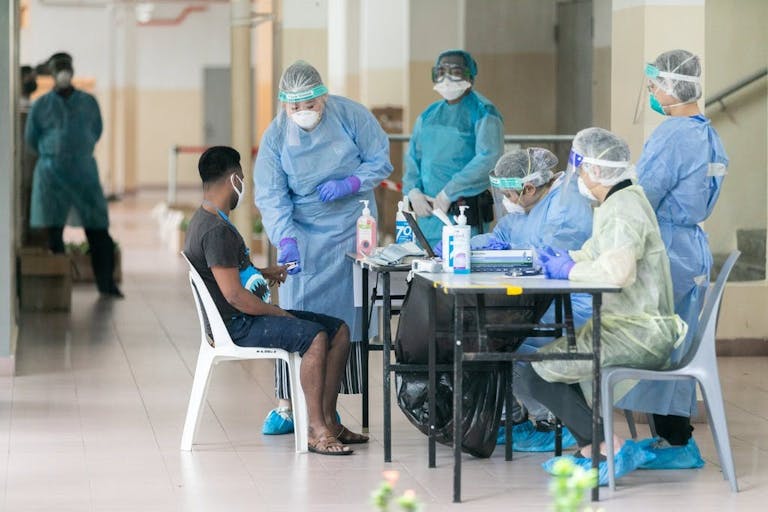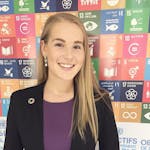With more people forced to flee their homes as a result of conflict, instability, and natural disaster, the World Health Organization (WHO) is working hard to ensure that migrant and refugee health is incorporated into global health responses.
“For me, as a single parent seeking asylum, it’s very scary because there’s the extra added worry of who would look after my kids should I fall sick. The fear can be paralyzing.”
“In here, the situation is not good. Overcrowded camp. No physical distance among refugees. We use the same toilet and shower. Food line about 20,000 refugees.”
“Corona has been a nightmare for the homeless as essential services shut down, and I was not able to access toilets anywhere. I ended up with a urinary tract infection and at the hospital due to the extreme pain. Overall, many people were kind and gave me food or money when they saw me alone on the street; others were very hostile when I wanted to access their toilet in cafes.”
These are a few of the harrowing anecdotes from a recent World Health Organization survey that illustrates the everyday experience of migrants during the COVID-19 pandemic. The study, which surveyed over 30,000 refugees and migrants living in 170 countries, was carried out by WHO’s Global Health and Migration Programme to learn more about how the global pandemic has affected this vulnerable group.
Many of the respondents had fled war or dire economic conditions in their home country only to be faced with the additional challenges posed by COVID-19. Travel restrictions including border closures, suspension of resettlement travel, and last-minute deportation left many stranded or forced to stay in cramped, makeshift shelters or detention centers. Amid these uncertain, precarious conditions, many migrants described either a lack of access to health services or a fear of seeking them out — even if they were experiencing COVID-19 symptoms.

“Refugees and migrants live and work in often-harsh conditions with inadequate access to health, housing, water, sanitation, and other basic services,” said WHO Director-General Dr. Tedros Adhanom Ghebreyesus. “It is vital for all countries to reduce barriers that prevent refugees and migrants from obtaining health care, and to include them in national health policies.”
The world is bearing witness to the largest migrations and displacement of people since the end of World War II, with entire communities being driven away from their home countries due to conflict, extreme violence, economic and political instability, and environmental hazards. Today, 281 million people are international migrants, nearly 26 million are refugees, and as of 2020, more than 80 million have been forced to leave their homes as a result of persecution, conflict, or generalized violence. The United Nations predicts that this trend will continue to accelerate due to rising inequality, population growth, increasing connectivity, and climate change. These demographic trends have led to increased calls by the UN system to proactively place migrants’ needs front and center of national health policies — and not simply as a reaction to crises or emergencies.
“Most stakeholders considered the health aspect to be a side effect of the migratory process,” said Dr. Santino Severoni, director of WHO’s Global Health and Migration Programme. “What we’re advocating for is for health to be a founding principle for human well-being.”
Mainstreaming refugee and migrant health
Appointed in June 2020 to oversee the new WHO initiative, Severoni is a medical doctor from Italy with a decade of experience working at the intersection of migration and health. He leads a team committed to supporting WHO Member States as they grapple with the public health challenges that come with large-scale migration, and to provide global leadership in health and migration issues through evidence-based information and policy, research, and advocacy. Their work builds on WHO’s global action plan (2019-2023) promoting the health of refugees and migrants, which aims to enhance health standards and achieve universal health coverage for all.
With the onset of the pandemic, Severoni worried that countries may rely on old tropes about migrants, fueling stereotypes and misinformation about this population spreading the virus.
“‘Now migrants will be accused of spreading COVID-19 around because they are mobile’ — this was my first concern,” he said. “But even though there were attempts to do this, the pandemic spread so fast that there wasn’t much time or energy to politicize the migrant issue.”
WHO and its UN partners work with host governments to make sure that the health needs of refugees and migrants are being considered at each step of the pandemic response and that they are receiving the same care as locals. Part of this means conveying to host communities that the virus knows no borders and that no one is safe until everyone is safe. In Yemen, for example, many migrants became the target of xenophobic attacks, and as a result, were subject to forced quarantine and movement restrictions, and in some cases, they were left stranded without access to food, water, or health services.
In addition to discrimination are concerns about the difficulty of implementing preventive measures such as physical distancing or hand hygiene in crowded temporary settlements or places of detention. In Cox’s Bazar in Bangladesh — which houses 850,000 refugees, in the world’s largest camp cluster — WHO set up an early detection and surveillance system, including testing sites for Rohingya refugees and their host community. They also trained hundreds of volunteers on contact tracing methods to keep track of positive cases, and on clinical case management to make sure that patients were receiving the right treatment.

In Colombia — where 1.7 million Venezuelans have sought refuge because of the country’s challenging sociopolitical and economic context — the Pan American Health Organization/World Health Organization (PAHO/WHO) is working closely with local and national officials, as well as different partners on the ground, to advance a comprehensive response that addresses migrants’ specific health needs. They organized technical working groups to tackle priority areas that would require multisectoral support, including sexual and reproductive health, child health, mental health, epidemiological surveillance and prevention, and emergency response, including epidemics. The team also developed communications materials on COVID-19 prevention measures, countering xenophobia, and protecting human rights for both migrants and host communities.
“It is fundamental to promote migrants’ access to services beyond emergency care, ensuring their access to medicines, referrals for specialized care, health promotion tools, and disease prevention and treatment,” Dr. Maria Eugenia Peréz and Dr. Francisca Arboleda, national consultants working with PAHO/WHO Colombia, said in an email.
Recently, the Colombian government announced it would offer migrants and refugees temporary protection status for 10 years, which would allow these individuals to access health services and COVID-19 vaccinations.
“We need to really stand by and support host countries, not just because of shared responsibility, but because a country that is receiving, hosting, nourishing millions of refugees and migrants actually pays a service to global society,” Severoni said.

Leaving no one behind
One of the most pressing challenges for Severoni’s team is advocating that all refugees and migrants be incorporated into vaccine rollout plans. Only a quarter of national vaccination plans submitted to the COVAX facility thus far include refugees and migrants, raising concerns about not only violating human rights, but also that leaving this population behind will allow the pandemic to continue to spread. Severoni points out that no scenario is ever black and white, and that many host societies are grappling with their own resource challenges.
“The most concerning situation is when we have countries with a shortage of means and capacity and they need to allocate between this or that,” he said. “This is where we, the international community, need to play a very important role in providing support and resources.”
At the same time, he stresses that equity in vaccine access — regardless of country of origin or legal status — is the only way to put an end to the pandemic.
“The pandemic has forced many countries around the world to confront what the public health field has been addressing all these years: that regardless of who you are, universal health coverage is the rational approach, and the only approach to follow if we really want to see results,” he said.
Featured Photo: Karen González/ Pan American Health Organization (PAHO)



 View All Blog Posts
View All Blog Posts
